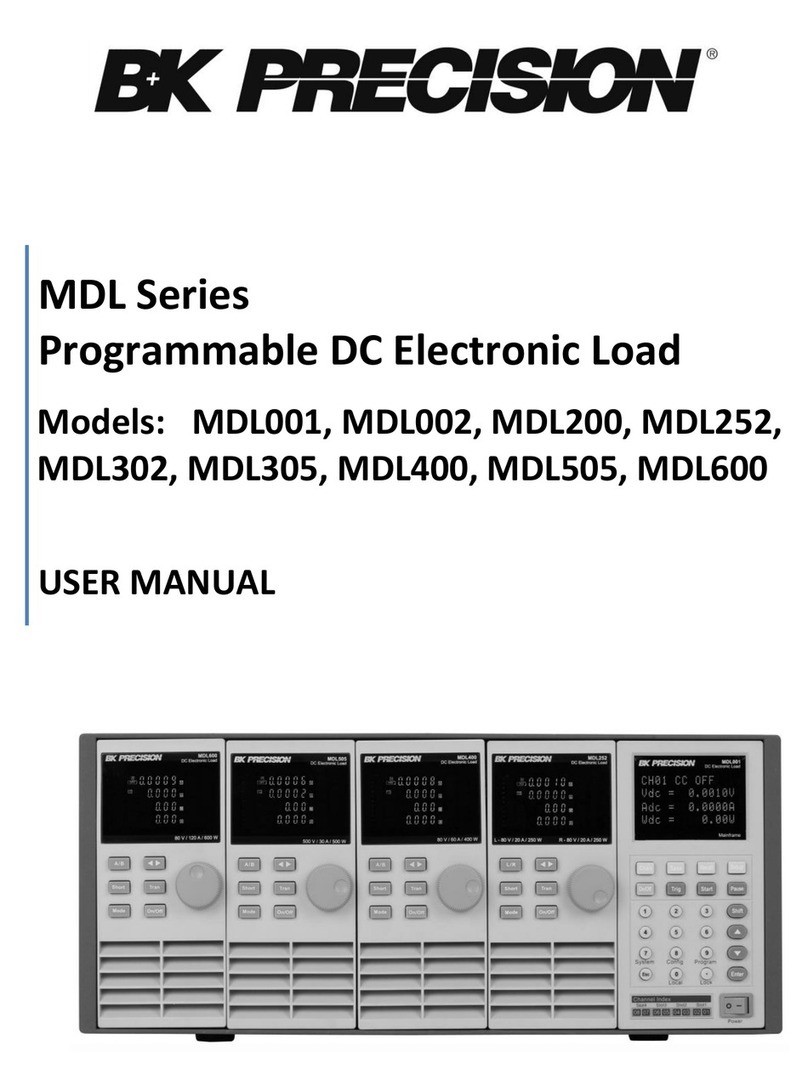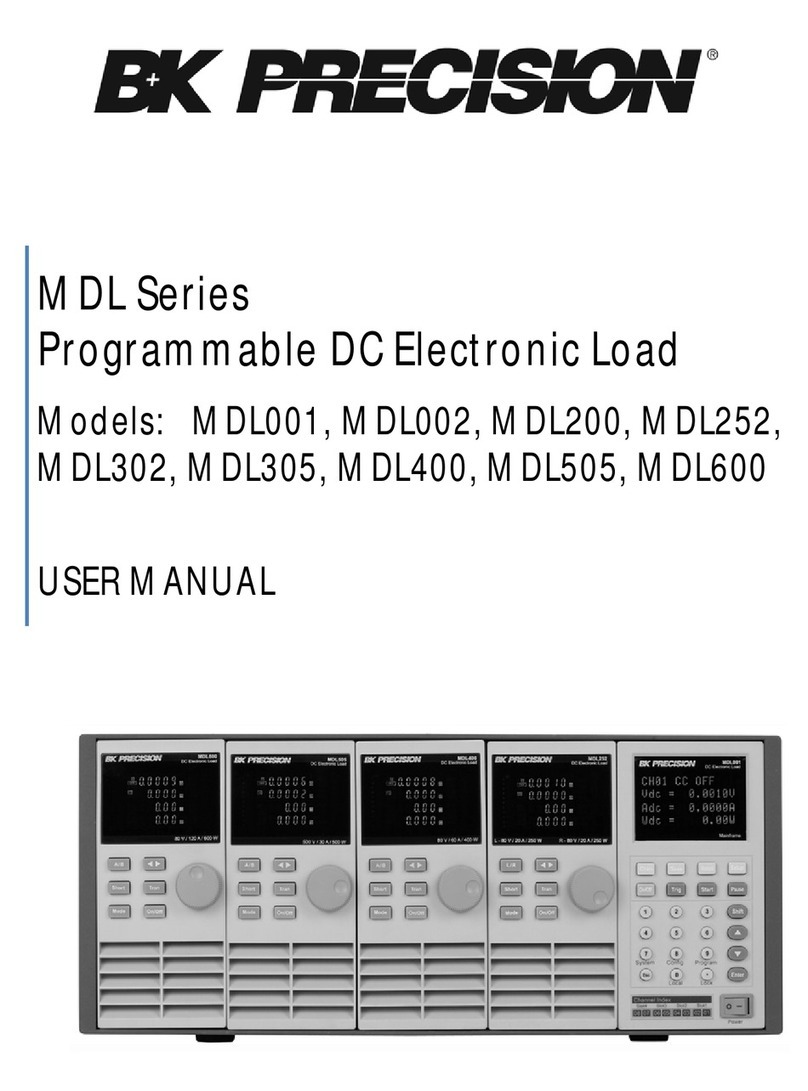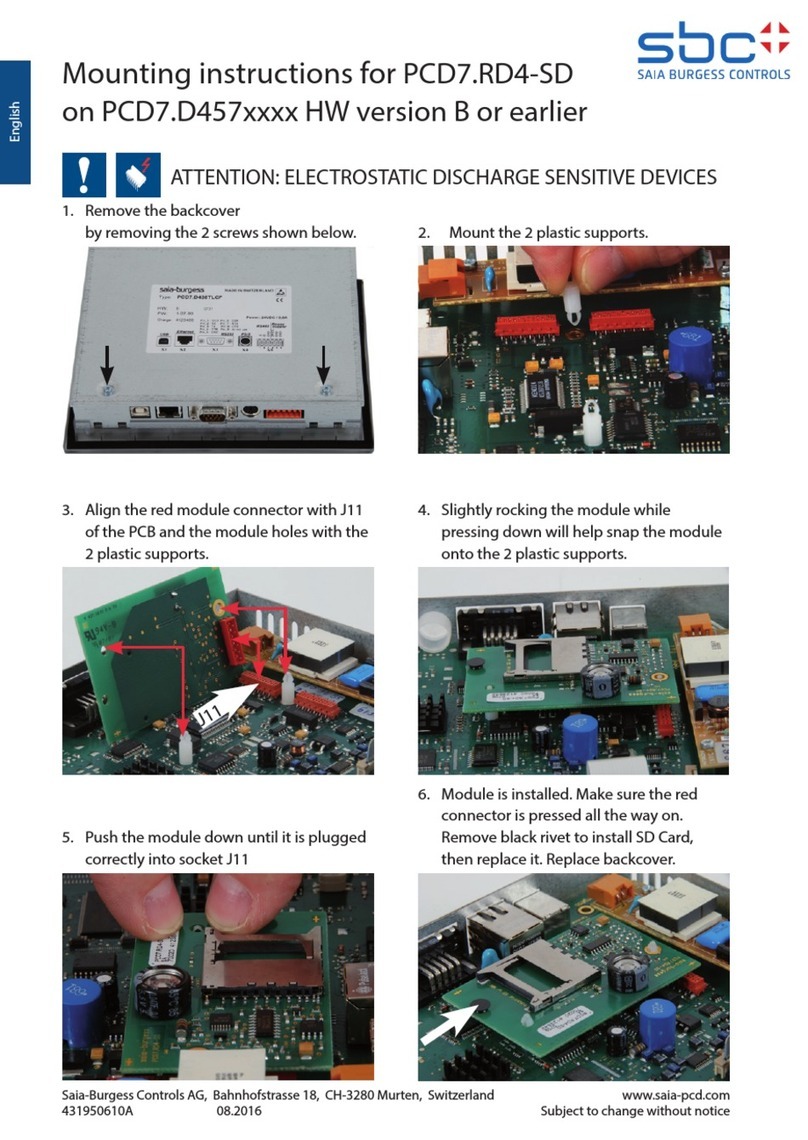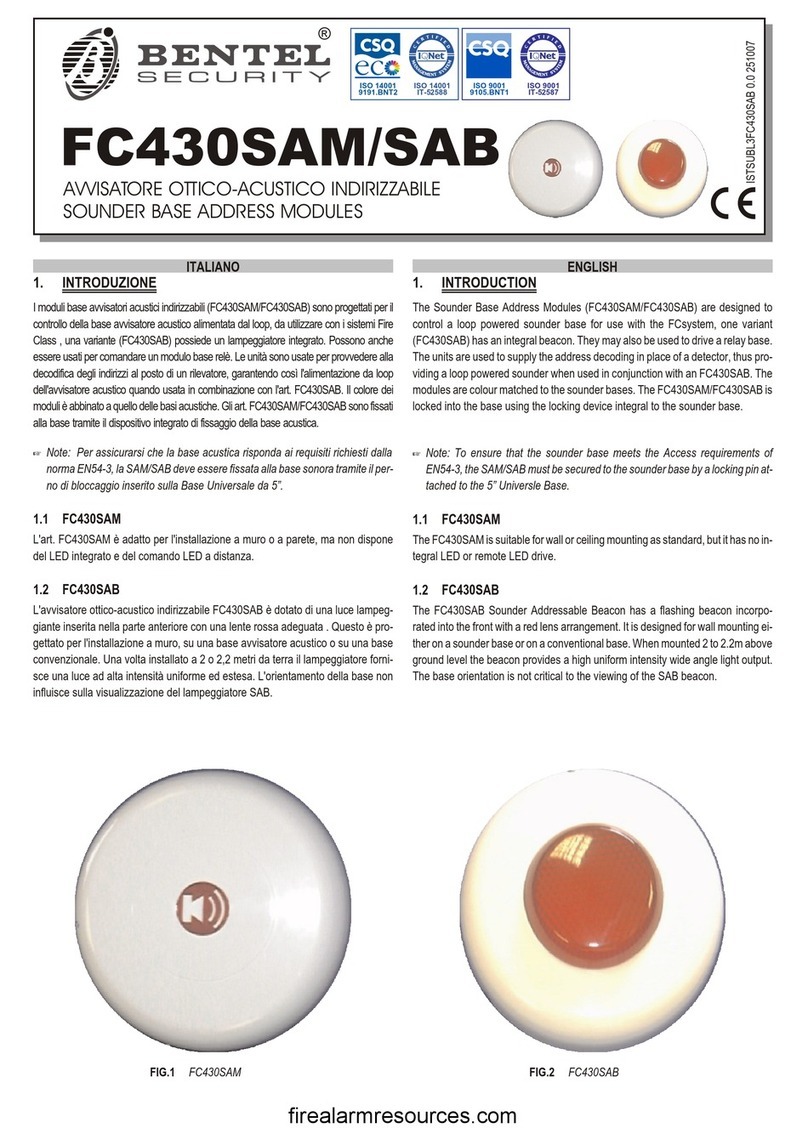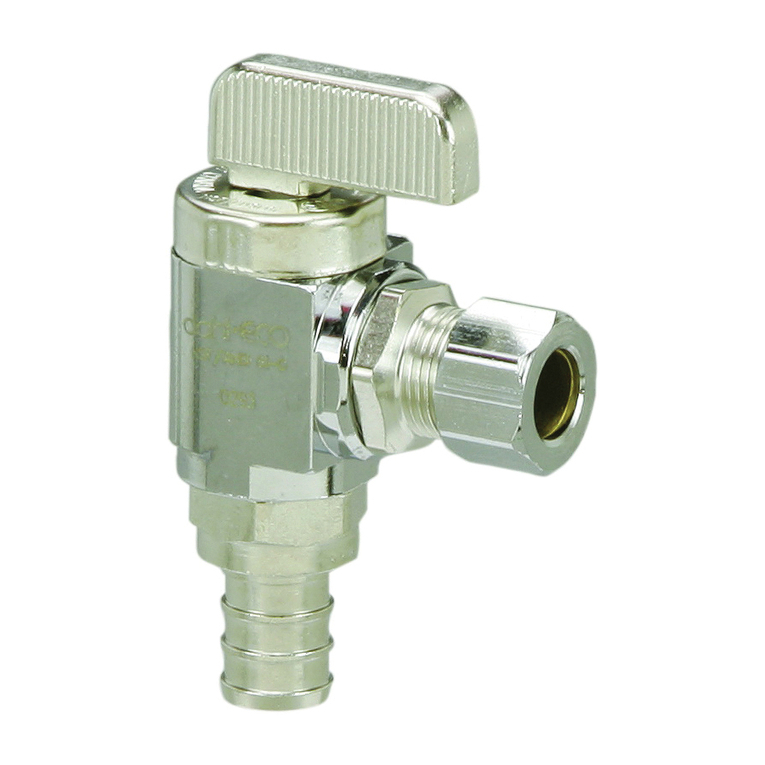B+K precision 6010 User manual

I
Before use
Thank you for your purchase of the Highspeed Programmable Attenuator model 6010/6011/6012/6013.
Please check the following prior to use of this equipment.
1. Ambient temperature and ventilation
The operating temperature of this equipment is 0°C to +40°C. Be careful not to obstruct air flow by
placing objects near the cover's ventilation hole and fan.
2. Power supply voltage
Check the power supply voltage before connecting the power cord of this equipment to a power outlet.
This equipment may be used with power supply voltage of 90 to 130V or 180 to 250V. The
equipment may fail if the power supply voltage is outside of these ranges.
3. Do not apply excessive voltage levels
Do not apply a voltage level exceeding ±20V to the TRIG IN input or READ CLOCK IN input.
4. Power cable
To avoid electric shock, use the provided power cable and connect it to a 3-prong power outlet.
5. Accessories
Please check that you received the following accessories:
1 Operating manual
1 Power cord
1 Fuse
1 Software Installation CD
1 RS-232C cable

II
Table of Contents
1.Overview 1
2.Specifications 2
2.1 Performance 2
2.2 External appearance and dimensions drawing 5
3.Description of panels 6
3.1 Front panel 6
3.2 Rear panel 8
4.Operation 9
4.1 Manual and program mode 9
4.2 ATTEN 9
4.3 FILTER 10
4.4 READ CLOCK 10
4.5 PRGM LENGTH 10
4.6 PAUSE TIME 11
4.7 READ MODE 12
4.8 SETUP 13
4.9 Set menu table 14
4.10 List of abbreviations 14
5.Attenuation profile creation software 15
5.1 System configuration 15
5.2 Installation and start-up 15
5.3 Menu structure 15
5.4 Operation 17
6.Remoteinterface 28
6.1 RS-232C protocol 28
6.2 GPIB protocol 29
6.3 Command list 30
6.3 Example program 31

1
1. Overview
The Highspeed Programmable Attenuator Models 6010/6011/6012/6013, the 6010 series, provide
attenuation of up to 80dB in steps of 0.05 dB and a minimum program step time of 2µs. The four models
cover a wide frequency range of 1.5GHz – 13.5GHz. The 6010 series offers high accuracy, stability and
many features, yet are easy to use. Due to the favorable price/performance ratio, the
6010/6011/6012/6013 attenuators are put to use in a diverse range of applications.
Features:
2 µs per word maximum switching speed (program readout clock speed) when in program mode
Wide attenuation range of 80dB for program and manual mode
Minimum attenuation step size of 0.05dB
Program run modes
The program can be executed in free run, burst, or gate mode.
FREE The program comprising of attenuation data and Pause information is
run continuously without the need of external trigger signals.
BURST Each rising edge of the trigger signal applied to TRIG IN triggers
execution of the program memory. Pause Time is ignored.
GATE The program (readout period) followed by the pause time is run while
the TRIG IN signal is TTL high.
Pause Time can be defined by number of clock cycles or by absolute time value
The Pause Time is the time interval in between program steps. It can be set in one-clock
increments or as a time value in 100 µs steps.
Software for creation of attenuation profiles
The 6010 series includes software to create and edit attenuation profiles and transfer the
attenuation data points via the RS-232C interface to the instrument’s internal memory (RS-232C
communication cable is included.) The Software is intuitive and Windows98/Me/2000/XP/Vista
compatible. The program’s large capacity and high resolution (memory depth of 128k words, 8 bits per
word) and support of clock frequency of up to 500 kHz makes the 6010 series an ideal tool for a broad
range of applications.

2
2. Specifications
2.1 Performance
Model 6010 Model 6011
Frequency range 1.5 to 4.5 GHz 3.0 to 9.0 GHz
VSWR < 1.5 @ 2 to 4 GHz
< 2.0 @ 1.5 to 4.5 GHz
< 1.7 @ 4 to 8 GHz
< 2.2 @ 3 to 9 GHz
Insertion loss
(0 dB setting)
< 2.3 dB @ 2 to 4 GHz
< 2.6 dB @ 1.5 to 4.5 GHz
< 3.0 dB @ 4 to 8 GHz
< 3.3 dB @ 3 to 9 GHz
Model 6012 Model 6013
Frequency range 4.5 to 13.5 GHz 1.95 to 5.85 GHz
VSWR < 1.8 @ 6 to 12 GHz
< 2.2 @ 4.5 to 13.5 GHz
< 1.6 @ 2.6 to 5.2 GHz
< 2.1 @ 1.95 to 5.85 GHz
Insertion loss
(0dB setting)
< 3.5 dB @ 6 to 12 GHz
< 3.8 dB @ 4.5 to 13.5 GHz
< 2.6 dB @ 2.6 to 5.2 GHz
< 2.9 dB @ 1.95 to 5.85 GHz
Attenuator
Setting range
Setting resolution
Accuracy
(at center of frequency range
and +10dBm input)
Impedance
Filter
Maximum input level
Input damage level
Input/output connectors
Readout clock input
Input level
Maximum frequency
Input impedance
Minimum pulse width
0 to 80 dB
0.05 dB
±0.5dB @ 0 to 10dB
±0.8dB @ >10 to 30dB
±1.0dB @ >30 to 50dB
±1.5dB @ >50 to 64dB
±2.0dB @ >64 to 74dB
±3.0dB @ >74 to 80dB
50 Ωnominal
1 µs to 3 ms, 1-3 step
100 mW, either CW or peak power
0.8W average power
20W peak power of 1 µs pulse
SMA
TTL
500 kHz
10 kΩ±5%
200 ns (for TTL low and high)
Test Equipment Depot - 800.517.8431 - 99 Washington Street Melrose, MA 02176
FAX 781.665.0780 - TestEquipmentDepot.com

3
Input damage level
Connector
Trigger input
Input level
Input impedance
Minimum pulse width
Input damage level
Connector
SYNC output
Output level
Rise / Fall time
Output impedance
Connector
±20V (DC + peak AC)
BNC
TTL
10 kΩ±5%
> 1 µs
±20V (DC + peak AC)
BNC
TTL
< 100ns
approximately 100 Ω
BNC
Functions
Attenuation mode
Program mode
Program length
Readout clock
Internal clock
External clock
Pause Time
Clock setting
Time setting
Program execution mode
Non volatile program memory
Manual and Program
8 to 131072 words, (can be set in one word steps)
100 Hz to 500 kHz, 1-2-5 step
DC to 500 kHz
0 to 65535 clocks adjustable in 1 clock cycle increments
0 to 6.5535sec (in 100µs increments)
Free, Burst, Gate
Program data is automatically saved when power is turned off.
Software for creating attenuation programs

4
Supported OS
Waveform creation
Standard waveforms
Parameters
Straight line
Math Functions
Editing options
File menu
Windows98/Me/2000/XP/Vista
Sine, Triangle, Square, Ramp, sin x/x, (1-ε-ax),
ε-ax and DC
Data length, Amplitude, Offset, Number of Cycles, Phase, Duty Cycle
(only Square wave), Zero cross (only sinX / X), Damp Factor
Connect two or multiple points with a straight line
+, -, ×, Clipping, Absolute, Mirror, Resize, Offset
Cut, Copy, Paste, Undo, Delete
New, Open, Close, Save, Save as, Data import,
Data export, Print, Printer setup, Transmit, Exit
Other
Display
Interface
RS-232C
Baudrate
GPIB
LCD (backlit. 2 rows of 20 characters)
Standard
2,400 to 57,600
Standard
General
Operating temperature
Operating humidity
Storage temperature
Power Supply
Weight
Dimensions
Standard accessories
0 to 40°C (Specifications guaranteed at 23 ±5°C)
less than 40°C / 80%RH (Guaranteed at less than 28°C / 80%RH)
-10 to +60°C / less than 80%RH
90 to 132VAC / 180 to 250VAC
(selectable by a switch located on rear panel)
approx. 10 lbs (4.5kg)
8.11” (W) ×4.53” (H) ×14.18”(D) (excluding projections)
260 (W) ×115 (H) ×360 (D) mm (excluding projections)
Operating manual (1pc), Power cord (1pc), Fuse (1pc),
Installation CD for creating attenuation profiles (1pc), RS-232C cable (1pc)

5
2.2 External appearance and dimensions drawing
Units in mm

6
3. Description of panels
3.1 Front panel
①POWER
- Main power switch.
②READ CLOCK IN
- READ CLOCK input terminal. Apply an external clock signal with a maximum of 500 kHz to this
input.
③TRIG IN
- Apply a TTL level trigger signal to this terminal when in BURST or GATE mode. Readout of
attenuation data is triggered by rising edge (BURST mode) or when signal is TTL high (GATE mode).
④SYNC OUT
- TTL level Output signal, indicates start of readout period when in program mode. The Sync signal is
programmable, see DLxxxx command in chapter 6 for details
⑤ATTEN IN/OUT
- Attenuator's input/output terminal.
⑥ATTEN OUT/IN
-Attenuator's output/input terminal.
CAUTION: Do NOT apply an input signal to both ATTEN IN/OUT terminals at the same time.
:⑦ATTEN MODE
- Key for selecting manual or program mode.

7
⑧READ CLOCK
- Key for selection of program memory read clock frequency.
⑨READ MODE
- Key for selecting BURST, GATE or FREE program execution mode.
⑩ATTEN
- Key for setting attenuation values in manual mode.
⑪PROGM LENGTH
- Key for setting the program memory length.
⑫SET UP
- Key for interface configuration.
⑬FILTER
- Key for setup of attenuator switching response time.
⑭PAUSE TIME
- Used for setting of program pause time.
⑮ENTER
- Used to confirm front panel entries
⑯
- Move cursor left.
⑰
- Move cursor right.
⑱ROTARY KNOB
- Increases or decreases the displayed numeric value. Turn clockwise to increase and
counterclockwise to decrease values.
⑲LIQUID CRYSTAL DISPLAY
- Letters can be displayed in two lines (up to 20 letters per line). The settings of all parameters such
as ATTN MODE, READ CLOCK, PROGM LENGTH, READ MODE and FILTER are displayed.
Test Equipment Depot - 800.517.8431 - 99 Washington Street Melrose, MA 02176
FAX 781.665.0780 - TestEquipmentDepot.com

8
3.2 Rear panel
①AC line input
- Connector for supplying AC power to the instrument. Use the provided power cord to connect to a
power outlet. The AC voltage range is 90 - 130V or 180 - 250V. Make sure that the supplied
voltage is within this range. The AC receptacle also incorporates a fuse holder. Use a slow blow
fuse of 1.5A for 90 - 130VAC, or a slow blow fuse of 0.8A for 180 - 250VAC operation.
②AC line voltage select switch
- The switch is used to select 90 - 130VAC or 180 - 250VAC operation. Make sure your selection
matches the supply voltage in your area
③Earth terminal for protection
- For safety reasons, if the power outlet is not of 3-prong type, make sure to connect this terminal to
Earth Ground.
④Fan motor
-Do not obstruct the airflow by placing objects in the vicinity of the vent hole.
⑤RS-232C
- Connector for RS232C communication. Communication with a PC is performed at 2,400 - 57,600
bps.
⑥GPIB
- Connector for GPIB communication.

9
4. Operation
4.1 Manual and program mode
- Select the attenuator control mode. The cursor on the screen moves to [MANUAL] or [PRGM] at
positions indicated below when the <ATTN MODE> key is pressed.
[MANUAL] mode screen
MANUAL 23.45dB
10μs
[PRGM] mode screen
PRGM 500KHz L:131072
P:6.5535s FREE 10μs
- Toggle between [MANUAL] and [PRGM] mode by turning the rotary knob
①[MANUAL] mode
The attenuation value set by <ATTEN> remains active.
②[PRGM] mode
The attenuation value is controlled by the program stored in internal program memory.
A program of up to 128K words can be stored. (An attenuation program can be created and
downloaded to the instrument’s memory using the provided attenuation program software or by
sending remote commands and data from a custom program)
4.2 ATTEN
- Set the attenuation level. The cursor moves to the xx.xx dB position when the <ATTEN> key is
pressed. This is valid in [MANUAL] mode only.
MANUAL 23.45dB
10μs
- Adjust the attenuation value within the range of 0.00dB - 80.00dB using the cursors and rotary knob.
Press the < key to move towards the most significant digit and press the > key to move towards the
least significant digit.

10
4.3 FILTER
- Set the attenuator switching response time. The cursor moves to the position indicated below when
the <FILTER> key is pressed. This parameter can be set in either [MANUAL] mode or [PRGM]
mode.
[MANUAL] mode example:
MANUAL 23.45dB
10μs
[PRGM] mode example:
PRGM 500KHz L:131072
P:6.5535s FREE 10μs
- Filter Response time can be entered in 1-3 steps in the range of 1 µs – 3 ms using the rotary knob.
Note: Use the built-in filter to reduce switching transients. To set the filter response time appropriately in
relationship to the readout clock, a value of 1/2 to 1/8 of the clock period is recommended.
4.4 READ CLOCK
- Select the program memory read clock. The cursor moves to the position indicated below when the
<READ CLOCK> key is pressed. This parameter is valid in [PRGM] mode only.
PRGM 500KHz L:131072
P:6.5535s FREE 10μs
- [MANU], [EXT], [100Hz] - [500kHz] can be selected using the rotary knob.
①When [MANU] is selected, one clock cycle can be generated by pressing the <ENTER> key.
②When [EXT] is selected, the signal applied to terminal READ CLOCK IN is used as the clock.
③When the range of [100Hz] - [500kHz] is selected, the internally generated clock is used.
4.5 PRGM LENGTH
- Set the program memory length. The cursor moves to the position indicated below when the
<PRGM LENGTH> key is pressed. This is valid in the [PRGM] mode only.

11
PRGM 500KHz L:131072
P:6.5535s FREE 10μs
-Move the cursor using cursor keys, and set a value in the range of 8 - 131072 using the rotary knob.
It is provided, however, that the upper limit depends on the date length in the program memory.
- Press the < key to move towards the most significant digit and press the > key to mode towards the
least significant digit.
4.6 PAUSE TIME
- The pause time is defined as the interval between readout periods. The first pause time is the time
interval between the first and second readout period.
Figure 1: Readout period and Pause time
The screen below appears when the PAUSE TIME key is pressed. Highlight and select one of the
parameters [TIME], [CLOCK] or [OFF]. The current setup is displayed in the right upper part of the
screen. This parameter is valid in the [PRGM] mode only.
Note: During the Pause time, the last attenuation value in the program remains active.
①When [TIME] is selected, the main screen is displayed and the cursor moves to the position
indicated below.
PRGM 500KHz L:131072
P:6.5535s FREE 10μs
- Move the cursor using the cursor keys and set a value in the range of 0 s - 6.5535 s using the rotary
knob. The cursor moves towards the most significant digit when < is pressed and towards the least
significant digit when the > key is pressed. Values can be set with 100 µs resolution.
PAUSE: TIME 0.0000s
TIME CLOCK OFF

12
②When [CLOCK] is selected the main screen is displayed and the cursor moves to the position
indicated below.
PRGM 500KHz L:131072
P:6.5535s FREE 10μs
- Move the cursor using the cursor keys and set a value in the range of 0 - 65535 using the rotary knob.
The cursor moves towards the most significant digit when < is pressed and towards the least significant
digit when the > key is pressed.
- Note: The applicable clock signal is what was selected by READ CLOCK.
③When [OFF] is selected, the main screen is displayed.
PRGM 500KHz L:131072
P:6.5535s FREE 10μs
- Setting the Pause time to OFF is equivalent to setting the parameters [TIME] or [CLOCK] to zero.
4.7 READ MODE
- Select the program read mode. The cursor moves to the position indicated below when the <READ
MODE> key is pressed. This is valid in [PRGM] mode only.
PRGM 500KHz L:131072
P:6.5535s FREE 10μs
- Select one of 3 possible modes [FREE], [GATE] and [BURST] using the rotary knob.
Figure 2: Readout period and Pause time for the 3 operating modes
Test Equipment Depot - 800.517.8431 - 99 Washington Street Melrose, MA 02176
FAX 781.665.0780 - TestEquipmentDepot.com

13
①When [FREE] is selected, the program is read (i.e., run) and a delay of the pause time is created.
This is repeated continuously.
②When [GATE] is selected, the program read and pause times are repeated while the signal input to
terminal TRIG IN is TTL High or while the <ENTER> is pressed (and held).
③When [BURST] is selected, program read is executed at the rising edge of the signal applied to
terminal TRIG IN or when the <ENTER> key is pressed. The pause time value is ignored.
4.8 SET UP
①The setup is used for the configuration of communication parameters. The screen below appears
when the <SET UP> key is pressed.
SET UP:
RS232C GPIB EXIT
②When RS-232C is selected, the following screen is displayed.
Select the baud rate of RS-232C using the rotary knob and confirm with the <ENTER> key.
(2400, 4800, 9600, 19200, 38400, 57600)
SET UP - RS232C
BaudRate: 57600
③When GPIB is selected, the following screen is displayed.
Select the GPIB address (0 - 30) using the rotary knob and confirm with the <ENTER> key.
SET UP - GPIB
ADDRESS: 10

14
4.9 Setup menu table
ATTEN MODE MANUAL ATTEN
PRGM
READ MODE
PAUSE TIME
PRGM LENGTH
READ CLOCK
TIME
OFF
CLOCK
FILTER
SET UP RS232C
GPIB
4.10 List of abbreviations
ATTEN‥‥‥‥‥Attenuator
PRGM‥‥‥‥‥‥Program
Trig‥‥‥‥‥‥Trigger
Sync‥‥‥‥‥‥Synchronize

15
5. Software for creating attenuation profiles
5.1 Minimum system requirements
- Windows PC with Windows 98/NT/2000/XP/Vista
- CD-ROM drive
- RS-232C port (for data transfer)
5.2 Installation and start-up
①Start SETUP.exe contained on the CD-ROM. The setup utility will start. For installation, follow
the on-screen instructions.
②Start MAS800.EXE. The attenuation program software will be launched
5.3 Menu structure
FILE NEW
Exit
Transmit...
Print
Printer Setup...
Data Export...
Data Import...
Save As...
Close...
Save
Open...
Delete
Paste
Copy
Cut
Undo
Edit

16
Y Scale
X Scale
Vertecal Zoom
Horizontal Zoom
View Zoom In
Zoom Max
Zoom Min
Zoom Out
Zoom In
Zoom Max
Zoom Min
Zoom Out
Length
Time
Full Scale
Ampl
Sub Wave Form
Add Wave Buffer
Add Wave Form
Sub Wave Buffer
Math
Clipping
Mul Wave Buffer
Mul Wave Form
Abs
Smooth
Offset
Mirror
Resize
Vertical
Horizontal
Options Free Hand
View Window
Status Bar
Tool Bar
Wave Form...
Select All
Select
Line
Help About

17
5.4 Operation
(1) File
- New
Open a new edit screen.
- Open
Read the attenuation waveform data from a File and display it in the edit screen. The file format is binary.
- Close
Close the edit screen.
- Save
Save the attenuation waveform data to a binary file
- Save As…
Save the attenuation data with a specified file name (binary file)
- Data Import…
Read the attenuation waveform data from a text file and display it on the edit screen. The attenuation
data must be formatted as illustrated in the following example:
Example: 1000 kHz sampling clock (program readout), length = 10 points
SAMPLING = 1.000KHz,,
20.00dB,20.00dB,20.00dB,20.00dB,20.00dB,60.00dB,60.00dB,60.00dB,
60.00dB,60.00dB,
- Data Export…
Save the waveform data to a text file.
- Printer Setup…
Set up of the printer.
- Print
Print the edit screen.
Test Equipment Depot - 800.517.8431 - 99 Washington Street Melrose, MA 02176
FAX 781.665.0780 - TestEquipmentDepot.com
This manual suits for next models
3
Table of contents
Other B+K precision Control Unit manuals
Popular Control Unit manuals by other brands

Quanser
Quanser SRV02 Series user manual
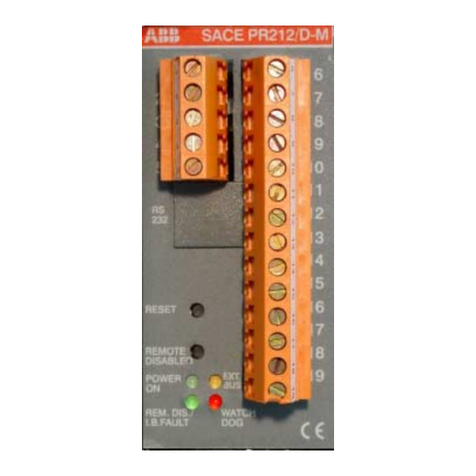
ABB
ABB SACE PR212/D-L instruction manual
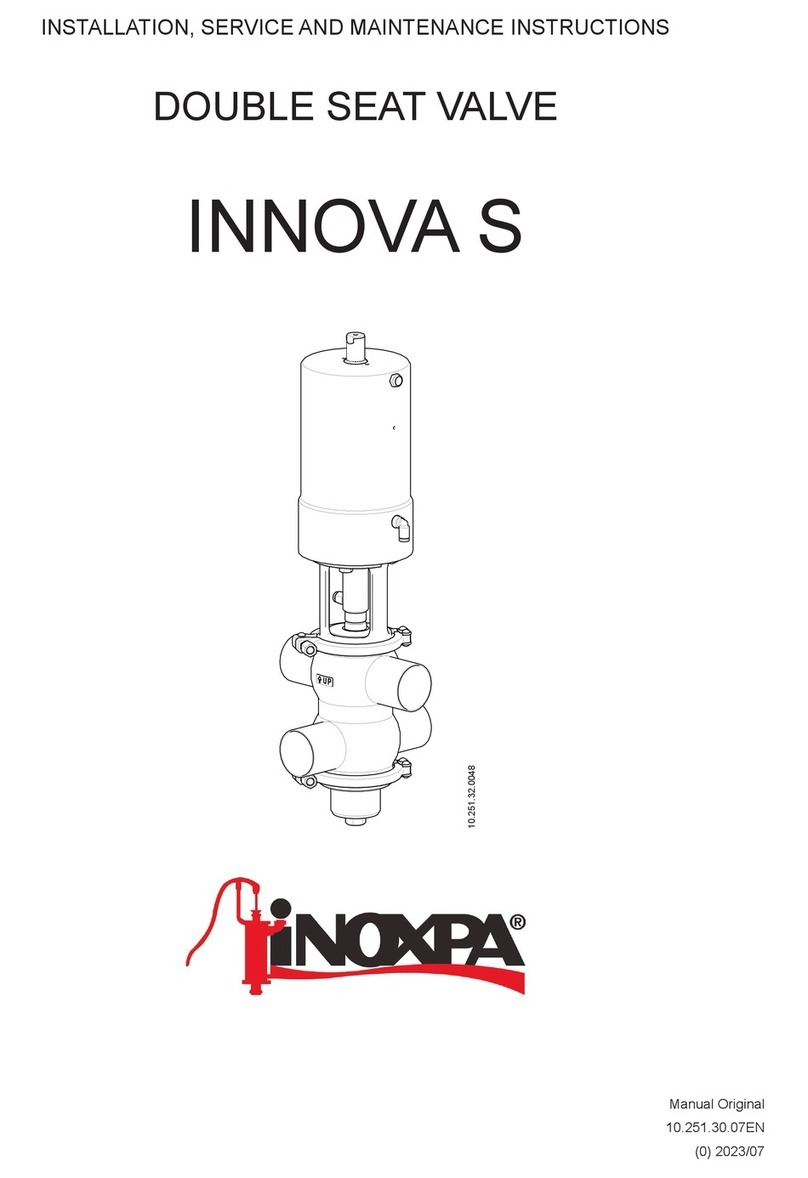
INOXPA
INOXPA INNOVA S Installation, service and maintenance instructions
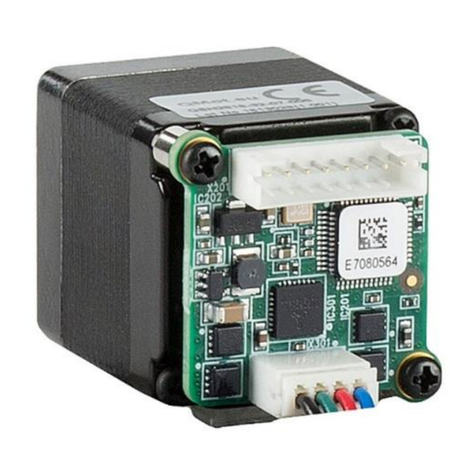
Trinamic
Trinamic PD28-1-1021 Hardware manual

Grundfos
Grundfos CIM 500 instructions
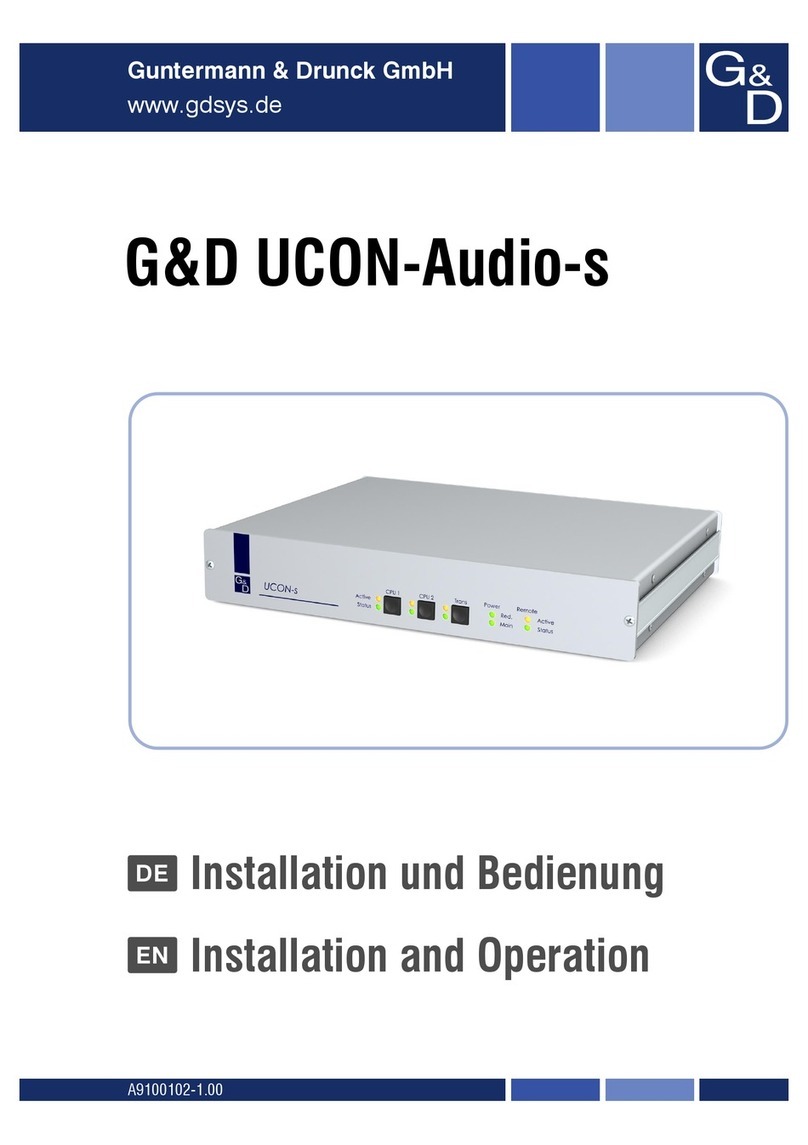
Guntermann & Drunck
Guntermann & Drunck G&D UCON-Audio-s Installation and operation

Stanley
Stanley STW0101N Applications manual
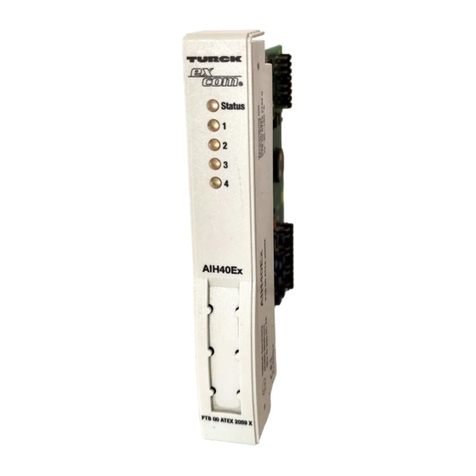
turck
turck excom I/O System Integration manual
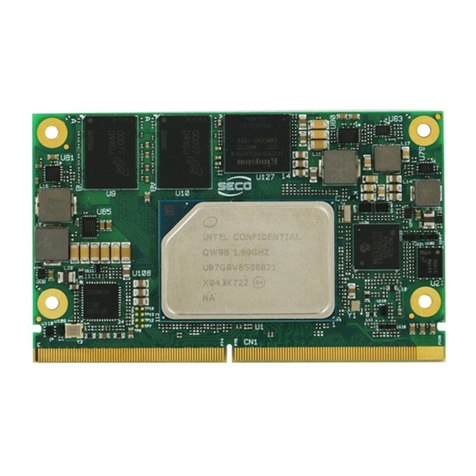
Seco
Seco Smarc SM-C93 user manual

Larson Electronics
Larson Electronics LM-SYM-XX-CTRL-R1 instruction manual
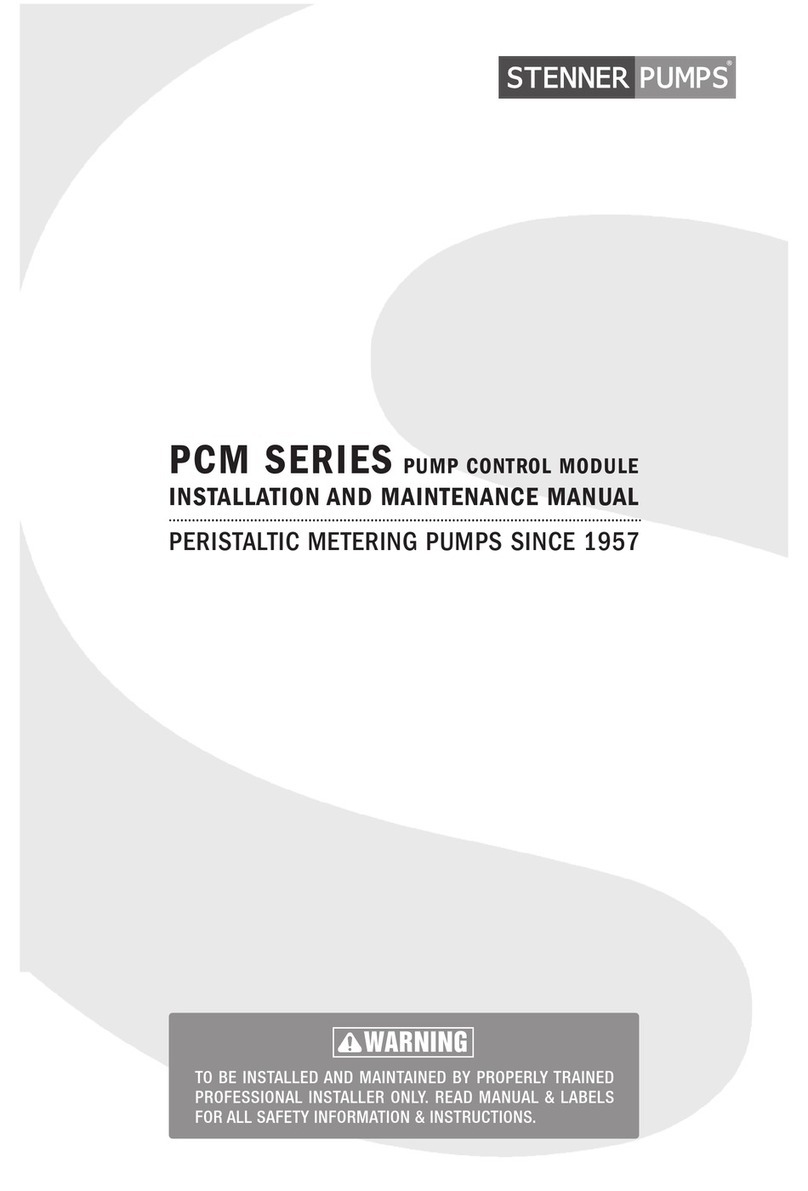
Stenner Pumps
Stenner Pumps PCM series Installation and maintenance manual

Moxa Technologies
Moxa Technologies ABC-01 Quick installation guide

